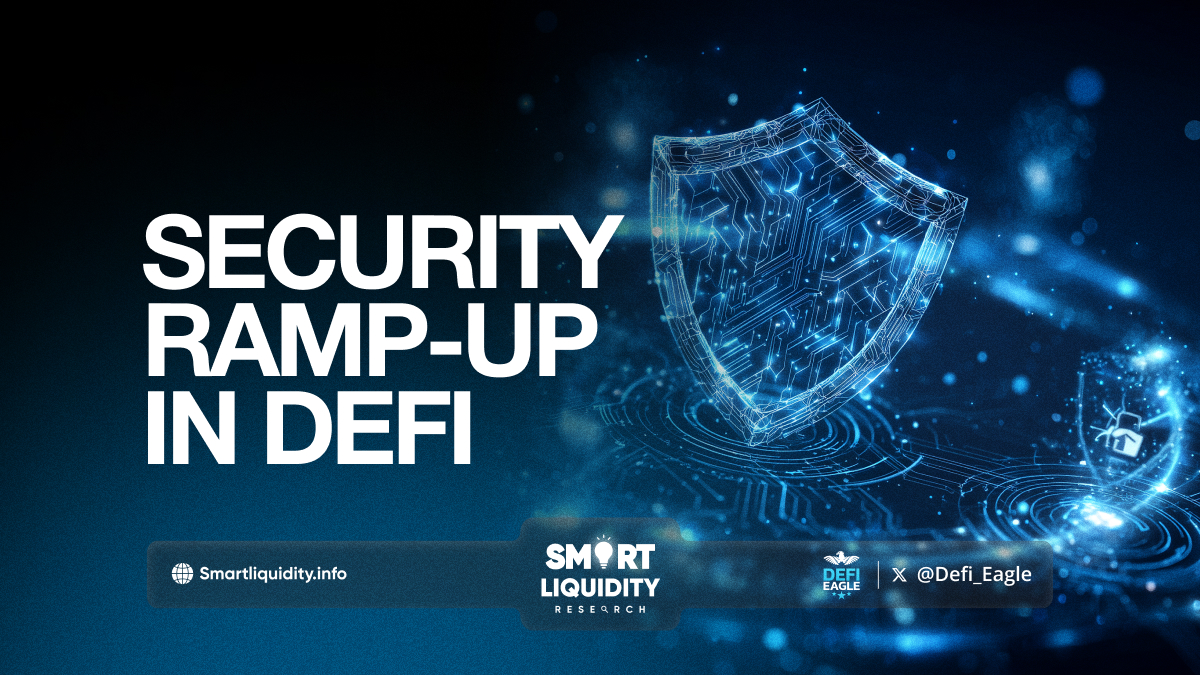Security Ramp-up in DeFi


Decentralized Finance (DeFi) has revolutionized how we interact with money, offering open access to financial services like lending, trading, and yield farming without intermediaries. But this innovation hasn’t come without risks. From the $600M Poly Network hack to smart contract exploits and rug pulls, DeFi’s meteoric rise has been shadowed by a cascade of security failures.
Now, a new chapter is unfolding: the Security Ramp-up in DeFi. The space is evolving fast, and security is no longer an afterthought—it’s a frontline strategy. Let’s explore how DeFi is stepping up its game to protect users, protocols, and the very future of decentralized finance.
Why Security Became the Priority
The total value locked (TVL) in DeFi protocols once surpassed $200 billion. But with every major exploit, confidence wavers. In 2022 alone, DeFi accounted for over 82% of all crypto losses due to hacks (according to Chainalysis). Each attack has highlighted weaknesses in smart contracts, oracle manipulation, flash loan exploits, and governance vulnerabilities.
Protocols are now realizing that trust is built on transparency—but sustained by security.
Smart Contract Audits: Evolving From One-Off to Continuous
Traditionally, projects would conduct a one-time audit before launching. Today, that’s not enough. The norm is shifting toward continuous auditing and on-chain monitoring.
🔍 What’s new?
- Real-time threat detection using AI-driven tools
- Bug bounty platforms like Immunefi offering up to $10M for critical discoveries
- Automated formal verification, ensuring smart contracts behave as intended mathematically
By embedding audits into the entire development lifecycle, teams are aiming for security by design, not patchwork.
Multi-Sig Wallets & DAO Governance: More Eyes, Fewer Mistakes
Many major hacks have stemmed from a single point of failure—whether it’s a compromised private key or a rogue developer. To mitigate this, protocols are now turning to:
🔐 Multi-signature (multi-sig) wallets, where transactions require approvals from multiple trusted parties
👥 Decentralized Autonomous Organizations (DAOs) with layered voting mechanisms and time-locked decisions
These tools decentralize control and increase accountability, making it much harder for an attacker—or even an insider—to go rogue.
Zero-Knowledge Proofs (ZKPs) & Privacy as Security
Privacy isn’t just a right—it’s a security measure. Zero-Knowledge Proofs (ZKPs), especially in DeFi protocols like zkSync and Aztec, enable transactions to be validated without revealing sensitive data.
Benefits include:
✅ Shielding user behavior from malicious actors
✅ Preventing front-running and MEV (Miner Extractable Value) attacks
✅ Enabling confidential DeFi apps with the same trustless principles
As ZK tech matures, confidential DeFi could become the norm, not the niche.
Oracle Hardening: The War on Price Manipulation
Oracles feed off-chain data to smart contracts. But many DeFi exploits come from oracle manipulation, where attackers game price feeds to drain liquidity pools.
Modern solutions include:
📊 Decentralized oracle networks like Chainlink and UMA
🧠 Machine learning models that detect and react to price anomalies
🔒 Redundant data sources for cross-verification
Oracle resilience is now seen as a critical layer of protocol security—not just a backend feature.
Insurance & Risk Management: Safety Nets for Users
Just as traditional finance uses insurance to manage risk, DeFi is spawning native insurance protocols like Nexus Mutual, InsurAce, and Sherlock.
These protocols offer coverage for:
- Smart contract exploits
- Oracle failures
- Custodian breaches
- Slashing risks in staking protocols
🔁 This “DeFi-for-DeFi” approach is empowering users to hedge against systemic threats, while also creating new yield-bearing opportunities for underwriters.
Security-as-a-Service: The New Web3 Sector
A new market has emerged: Security-as-a-Service for DeFi. These are teams and DAOs solely focused on safeguarding Web3 infrastructure.
Examples include:
🛡️ CertiK – Blockchain security and auditing powerhouse
🛡️ OpenZeppelin Defender – Automates security operations and incident response
🛡️ Halborn – Enterprise-grade security for crypto projects
As demand for secure DeFi scales, these players are building the backbone of a safer ecosystem.
Security Innovations in DeFi
Security Layer | Innovation/Tool | Impact |
Smart Contract Integrity | Continuous audits, bug bounties, formal verification | Proactively catches vulnerabilities |
Key Management | Multi-sig wallets, DAOs | Prevents centralized failure |
Privacy | Zero-Knowledge Proofs | Reduces traceability & MEV |
Oracle Reliability | Decentralized oracles, anomaly detection | Prevents price attacks |
User Protection | DeFi-native insurance protocols | Encourages adoption & trust |
DevOps & Monitoring | Security-as-a-Service | Real-time threat response |
What Comes Next?
Security ramp-up is not a trend—it’s a transition. As DeFi matures, the pressure to “move fast and break things” is being replaced by a deeper commitment to resilience, compliance, and responsibility.
The next generation of protocols won’t just be decentralized and composable—they’ll be fortified by default.
DeFi’s future depends not only on innovation but on its ability to defend what it builds.




